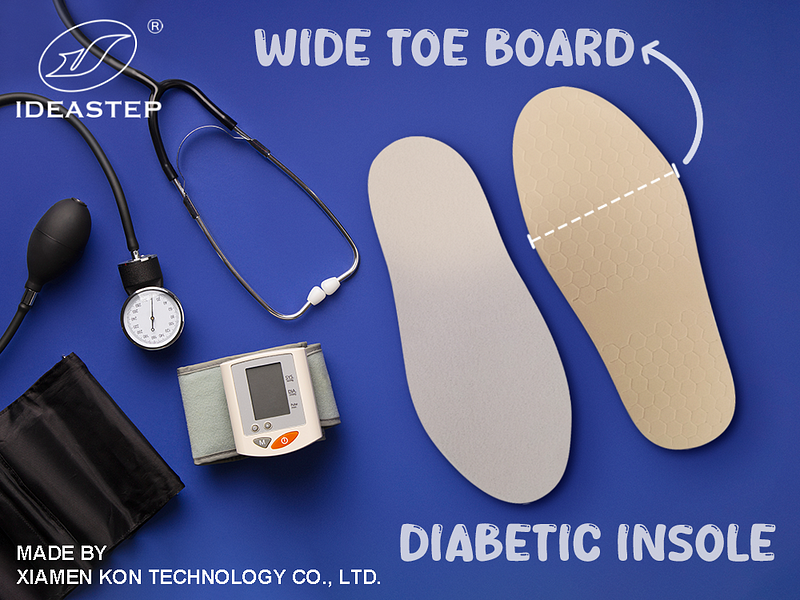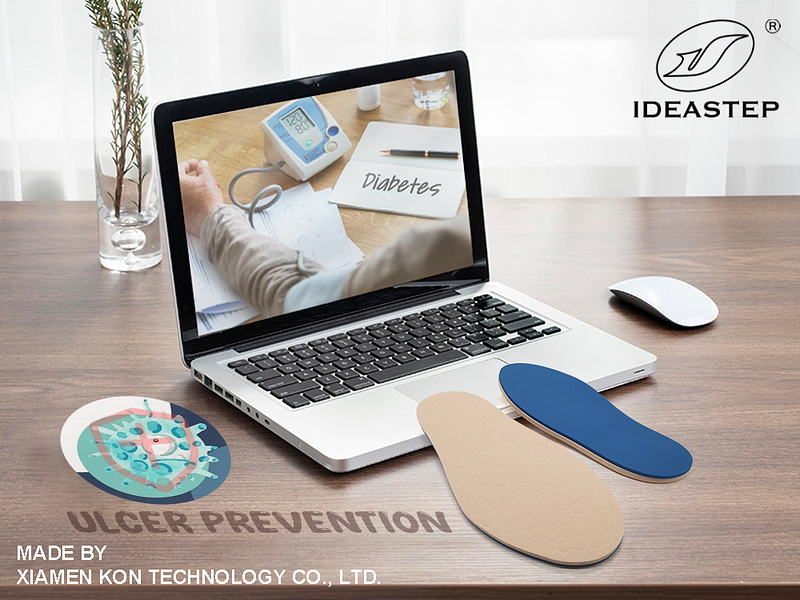“Diabetic insoles play a crucial role in managing foot health for individuals with diabetes. Understanding when and how to use these specialized insoles can prevent complications and ensure optimal comfort and protection for diabetic feet.”
When Should Diabetic Insoles Be Used for Optimal Foot Health?
Diabetes can significantly impact foot health, making it essential to use appropriate footwear and insoles to prevent complications. Diabetic insoles are designed to offer enhanced protection, support, and comfort to individuals with diabetes. This article explores when diabetic insoles should be used and their benefits in maintaining optimal foot health.

Why Diabetic Insoles Are Important
People with diabetes are at a higher risk of developing foot problems due to factors like poor circulation, reduced sensation, and prolonged pressure. Diabetic insoles are specifically engineered to address these issues by providing additional cushioning, support, and pressure relief. These insoles help mitigate the risk of ulcers, calluses, and other foot complications that are common among diabetics.
When to Use Diabetic Insoles
1. When Experiencing Foot Pain or Discomfort
Foot pain or discomfort is a common issue for diabetics, often caused by nerve damage or poor circulation. If you experience persistent pain or discomfort, diabetic insoles can provide the necessary cushioning and support to alleviate these symptoms. The insoles are designed to distribute pressure more evenly across the foot, reducing localized pressure points and enhancing overall comfort.
2. If You Have Diabetes-Related Foot Conditions
Diabetics are prone to various foot conditions, such as neuropathy, calluses, and ulcers. Diabetic insoles can be beneficial in managing these conditions. For instance, individuals with diabetic neuropathy, which reduces sensation in the feet, can benefit from the extra cushioning provided by these insoles. This additional cushioning helps prevent injuries and reduces the risk of developing ulcers by absorbing shock and reducing pressure.
3. For Individuals with Poor Circulation
Poor circulation is a common issue for diabetics, leading to reduced blood flow and increased risk of foot complications. Diabetic insoles often feature materials that enhance circulation by providing better support and reducing pressure on specific areas of the foot. This can help improve overall foot health and reduce the likelihood of circulatory issues exacerbating foot problems.

4. When Purchasing New Shoes
When buying new shoes, it is crucial to ensure they provide adequate support and comfort. Diabetic insoles can be an excellent addition to new footwear, especially if the shoes lack sufficient cushioning or support. Customizing your new shoes with diabetic insoles ensures that they meet the specific needs of your feet, enhancing overall fit and comfort.
Benefits of Using Diabetic Insoles
1. Enhanced Cushioning
Diabetic insoles are designed with additional cushioning to absorb shock and reduce impact on the feet. This cushioning helps to protect sensitive areas and prevents the development of painful conditions, such as calluses and ulcers. Enhanced cushioning is especially beneficial for individuals with diabetic neuropathy, providing a more comfortable and protective foot environment.
2. Improved Pressure Distribution
One of the key features of diabetic insoles is their ability to distribute pressure more evenly across the foot. This reduces localized pressure points that can lead to ulcers and other complications. By spreading the pressure evenly, diabetic insoles help to minimize the risk of developing foot problems and promote better overall foot health.
3. Increased Support and Stability
Diabetic insoles provide additional support to the foot, helping to stabilize the foot and improve gait. This added support can help prevent foot fatigue and discomfort, making it easier to stay active and mobile. Proper support and stability are crucial for individuals with diabetes, as they help maintain proper foot alignment and prevent injuries.

Choosing the Right Diabetic Insoles
1. Consult with a Healthcare Professional
Before selecting diabetic insoles, it is important to consult with a healthcare professional, such as a podiatrist. They can assess your specific foot needs and recommend the most suitable insoles based on your foot structure and any existing conditions. Professional guidance ensures that you choose insoles that provide the best possible support and comfort.
2. Consider Material and Design
Diabetic insoles come in various materials and designs, including foam, gel, and custom-molded options. The choice of material can impact the level of cushioning and support provided. For example, gel insoles offer excellent shock absorption, while foam insoles provide softness and comfort. Select insoles that align with your specific needs and preferences.
3. Ensure Proper Fit
For diabetic insoles to be effective, they must fit properly within your shoes. Ensure that the insoles match the size and shape of your feet and are compatible with your footwear. Proper fit is essential for maximizing the benefits of diabetic insoles and ensuring they provide the necessary support and comfort.
Conclusion
Diabetic insoles are a vital tool for maintaining optimal foot health for individuals with diabetes. Understanding when and how to use these insoles can help prevent foot complications and ensure enhanced comfort and protection. By selecting the right insoles and consulting with healthcare professionals, diabetics can effectively manage their foot health and improve their overall quality of life.
FAQs
- Can diabetic insoles be used in any type of shoe? Diabetic insoles can be used in most types of shoes, but it is important to ensure they fit properly within the shoe. Proper fit ensures that the insoles provide optimal support and comfort.
- How often should diabetic insoles be replaced? Diabetic insoles should be replaced as needed, typically every 6 to 12 months, depending on wear and tear. Regular replacement helps maintain effective support and cushioning.
- Are custom-made diabetic insoles better than over-the-counter options? Custom-made diabetic insoles are tailored to your specific foot shape and needs, often providing superior support and comfort compared to over-the-counter options. However, high-quality over-the-counter insoles can also offer significant benefits.
